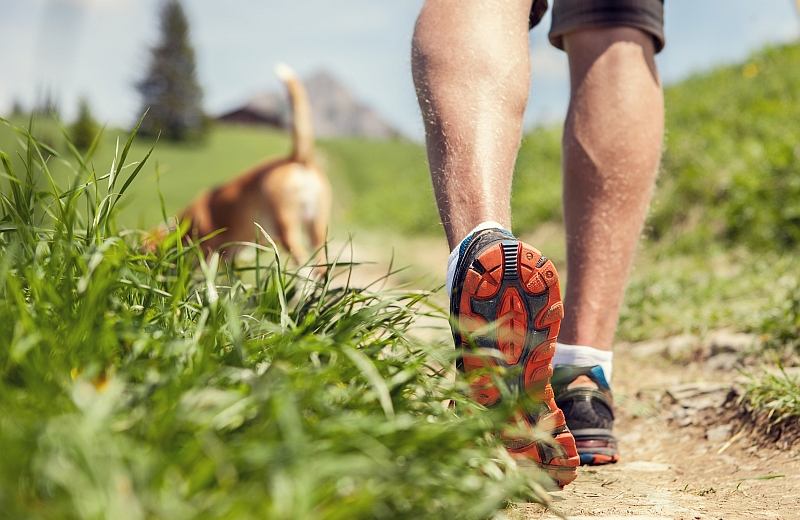Besides playing with their owner, going for a walk is often the highlight of a dog’s day! There is nothing like a jaunt in the sunshine, or playing fetch at the park to make a dog feel happy and satisfied. But in spite of all the good times, there are plenty of hazards that accompany spending an afternoon in the great outdoors. Here are some of the main dangers to look out for whenever you exercise your pet
Exercise Warnings for Dogs
Timing: Taking the dog for a walk most generally coincides with convenience rather than ideal timing. Most walks occur right when we get home from work, or whenever we feel the desire for some fresh air. However, failing to plan the right timing could result in unpleasantness or even danger for your pet. The pup might be ravenous when you get home, ready to devour anything you put in the food bowl. If this is the case, you will have to wait at least an hour before walking so that he doesn’t get indigestion or stomach cramping from walking too close to a meal. Another time consideration is that of lighting (and heat! Avoid walking in the heat of the day). Walking or jogging at dawn and dusk is also tricky, since poor lighting might make it hard for drivers to see you and your dog. Try to plan accordingly, and when necessary, wear lights and reflectors so you will be easily seen.
Where: Walking your dog in the neighborhood or to a local park is usually the first go-to spot for exercise. On occasion though you might venture out on new hiking trails, or to unfamiliar places for your pup’s daily work out. Try to avoid places with poorly lit paths, or hills without trails where you could surprise a wild (and defensive) animal, or on steep gravel hills where you could potentially lose footing and sprain a paw.
Aftermath: Dogs have fur coats that work as the perfect hiding place for parasites, and unfortunately going for excursions though thick brush, or under large trees could subject your pup to ticks or other bugs. In order to avoid getting any diseases from these pests, be sure to check your dog’s body for ticks when you get home. (Also make sure you review how to remove ticks and that you wash and disinfect any tick or bug bite, or any scrape the pooch might have gotten on the way.)
Overworking: Not all dogs can handle the same amount of rigorous activity. A Doberman Pinscher will attack a steep trail with better endurance than a pug, for example. So be careful to accurately assess what sort of exertion is suitable for your dog. If you are more fit than he, maybe go for your 5 mile run before heading out for a light stroll with your senior Pomeranian dog. What could function as a “cool down” for you, might be all the walking your pup can handle. Likewise, if you find your dog isn’t seeming to get enough exercise, while you are dripping with sweat, get on a bike and take him for a long, intense run. You’ll be able to go a greater distance if you are peddling away as he runs beside. Try to be mindful of how heavily your dog is panting, or if he slows his pace and is lagging behind. Overworking your pooch could result in injury or illness, so amend your plans based on how much energy and stamina your dog seems to have that day.
Dehydration: Give your dog some water before your outing, and plenty afterwards. If the event could take longer than an hour or two, it is a good idea to bring some water on your journey. Dehydration can cause a dog great discomfort and illness, and can be a serious problem for pets that spend lots of time outdoors, playing games, or running frequently. Help your dog stay fit and well by providing him sufficient water.
Other animals: While we don’t encourage you to become one of those paranoid pet parents who never let their dogs do any exploring, or won’t let a stranger’s pup approach their dog, we do encourage you to be wise. When you visit the neighborhood picnic area, or go hiking in a nearby state park, exercise a bit of caution when it comes to other animals. If dogs are off leashes, keep your pup close by, since you have no idea how the other canines will behave. If you see small wild animals that seem to have no fear of humans, or if you note that there are areas where animals could burrow or be hiding, try not to let your pup wander off on his own. Squirrels, skunks, raccoons, are among the creatures who could be rabid, and likely to snap at your dog if he were to come too close. On dusty or hot trails, keep an eye out for snakes! Though it is seldom life-threatening, snakebite is no fun for pets!

